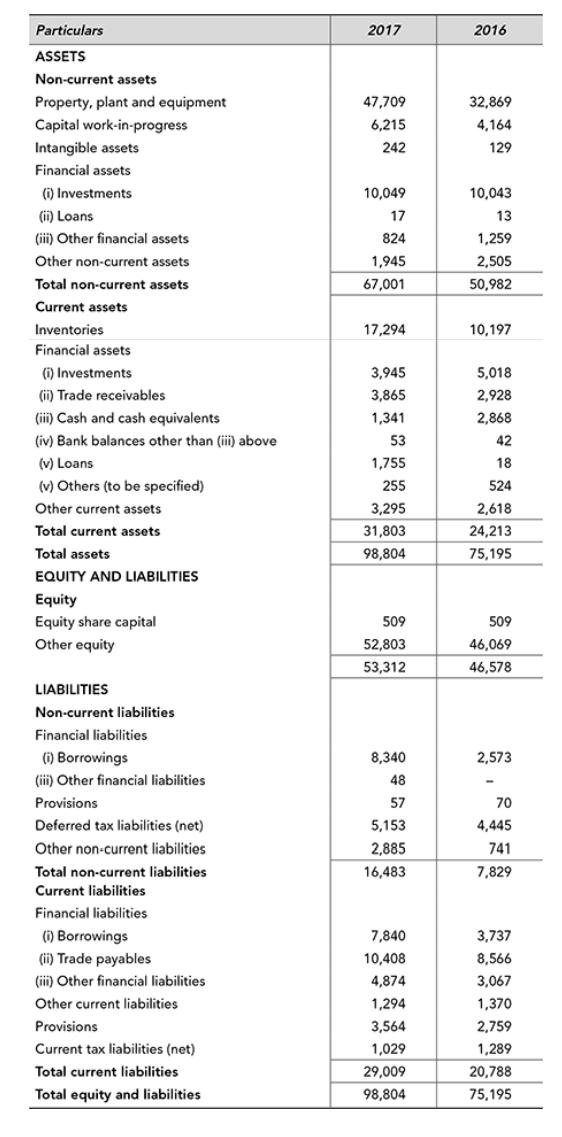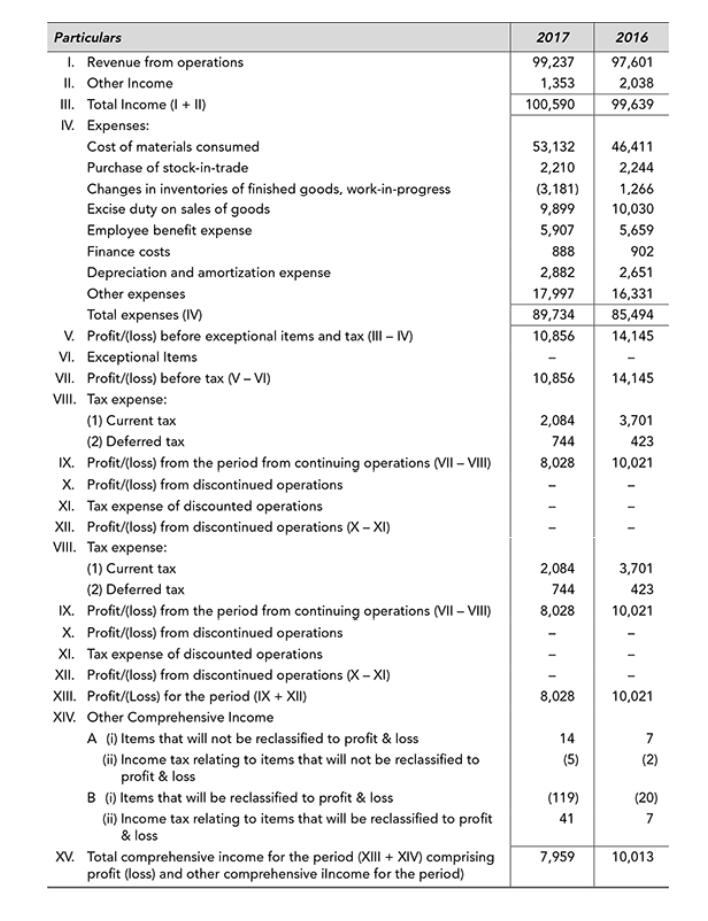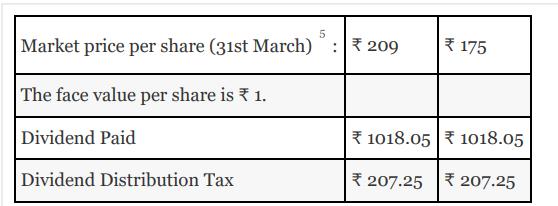Established in 1976, Apollo Tyres Ltdis Indias leading tyre manufacturer, with operations in three continents, and headquartered
Question:
Established in 1976, Apollo Tyres Ltdis India’s leading tyre manufacturer, with operations in three continents, and headquartered in Gurgaon, outside India’s capital city of New Delhi. The equity shares of the company are widely held and with 61% of shares are held by the public, government entities, banks and financial institutions. The company manufactures the entire range of passenger car, SUV, MUV, light truck, truckbus, agriculture, industrial and offtheroad tyres; retreading material, retreaded tyres and alloy wheels the company operates through a vast network of branded, exclusive and multiproduct outlets. For the year ended 31st March 2017, the company achieved 4 total revenue of ₹100,590 million and profit after tax of ₹8,028 million compared to ₹99,639 million and ₹10,021 million respectively in the previous year. The statement of profit and loss and the balance sheets of the company for the years 2016–17 and 2015– 16 are summarized below:
Balance Sheet as on 31st March 2017

Statement of profit and loss for the year ended 31st March


Questions for Discussion
1. Calculate profitability ratios for the two years. What are the key reasons for the fall in the profits of the company?
2. Comment upon the dividend policy being followed by the company.
3. Analyze the capital structure of the company with appropriate ratios. Is the company in a good position to service its debts?
4. Critically analyze the working capital management by Apollo Tyres Limited.
5. Calculate the return on equity for the company for the last two years and analyze the same using DuPont Analysis.
6. Using the information above determine earnings per share, market capitalization, market value to book value ratio, dividend yield and price earnings ratio.
Step by Step Answer:






